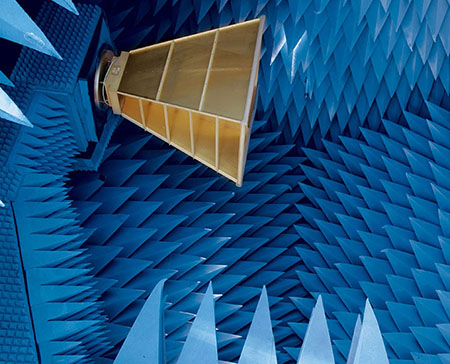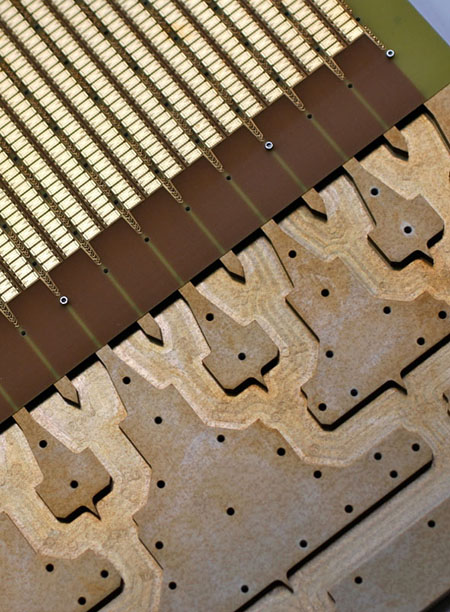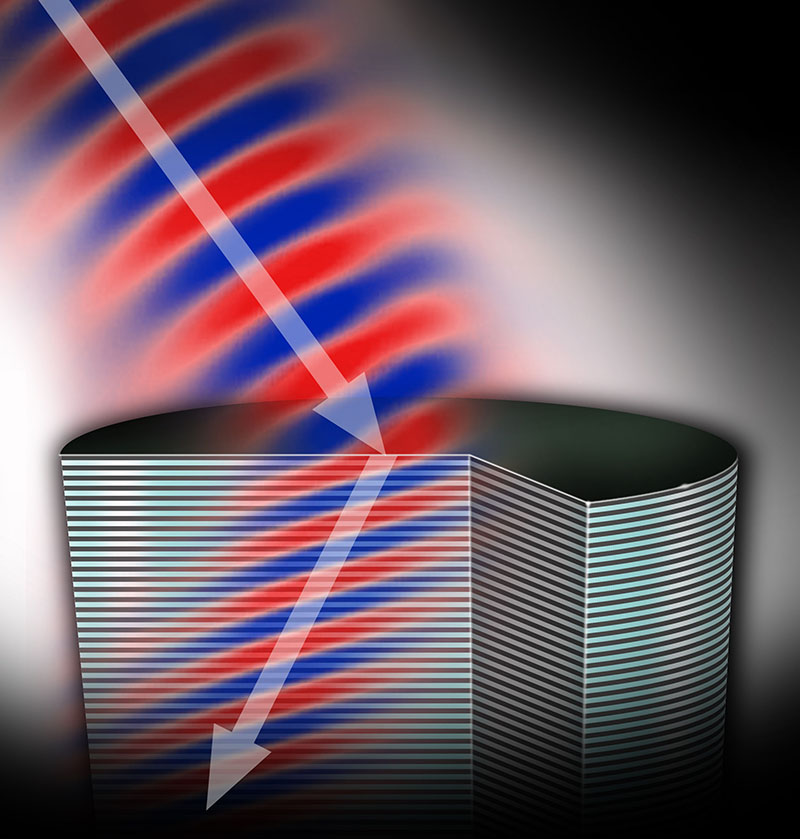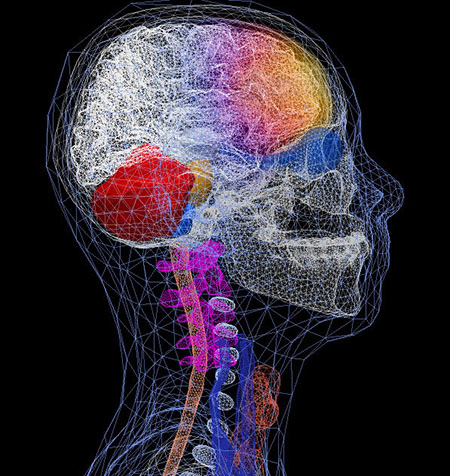Antenna
Nowadays advanced handheld communication devices are looking forward to more compact antennas that cover all their imperative frequency bands. Almost all modern portable devices have a Wi-Fi capability for wireless connectivity. The new long term evaluation (LTE) band in 4G wireless communication has attracted considerations due to greater amount and higher speed of transmission. In addition, internal global positioning system (GPS) is also required to support intelligent transportation and precise positioning. We work on several approaches to design and implement of wideband/multiband/miniaturized or any other special characteristics for antennas in extensive range of applications: Internal electrically small antenna (ESA) is one of these antennas that have enormous applications in Tablet/Laptop computers. We work on shaped reflector and reflectarray antennas for ground station of space applications. Moreover, we work on loaded monopole and dipole antennas to fabricate broadband antennas for UAV applications. We also investigate the effects of antenna radiation and polarization on SAR. The field of Non-foster ESA and arrays as well as on-body communication is the other subjects of our investigations.

Phased Array Antennas

Phased array Antennas have been widely used in advanced telecommunication systems. The most attractive feature of the phased array antenna is its flexibility along with versatility and resistance against interference and multipath, which caused the emergence of cellular and wireless technologies. It is well known that any error in designed phase/amplitude coefficients will result in array performance reduction, i.e. maximum gain, main lobe direction and side lobe levels. Unfortunately, these errors are common, especially in low cost array antennas. However, a low cost phased array antenna with high accuracy in radiating pattern is a big challenge for engineers. The cost generally includes expensive antenna elements; accurate array feed network and high precision process in array manufacture. Although, several designs can be found in the literatures, design of low cost array component with such a high accurate phase shifters is also an open problem. Beside of these efforts, some researchers prefer to solve this problem using calibration algorithms. Some of them are signal based solutions which involve in estimating the correlation matrixes. In these methods the angle of radiating sources should be known. The other approaches are usually based on array physical structure. In these approaches the array coefficients are calibrated against mutual coupling, mast and ground effects and other environmental conditions. However, in all of these mentioned methods, there are some limitations such as number of sources, knowledge of source angles, the array structure, and variable accuracy in DOA estimation with regard to angle of source. Recently, it is shown that the phase errors may be corrected using zero-knowledge algorithm. This algorithm is based on optimization of array output power, regardless of any further information. However, as an interesting research we work on a complete phase/amplitude calibration which does not depend on array structure. We try to propose an algorithm which may robust for all DOA angles and side lobe levels while there is no need for known DOA calibrating source.
Metamaterials
In recent years, introducing metamaterials based on theory established by Veselago, opened the way for many researcher groups to enhance the performance of RF/Microwave devices. Over the last decade, increasing demands for low profile multifunctional RF/Microwave devices, i.e. antennas, have resulted in considerable interest by the electromagnetic research community in Metamaterials (MTMs). Although, miniaturization of RF/Microwave devices is one of the most interesting subjects in the fields of metamaterials applications, due to the dispersive nature of MTMs, i.e. SRRs, CLLs, etc., enhancing device bandwidth using MTMs structures is not investigate extensively. In the past few years, extensive research has been carried out on the metamaterial with ε-near-zero (ENZ) parameters. ENZ MTMs have emerged into the focus of extensive research for their anomalous features at microwave and optical frequencies. Recently, it has been addressed that ultra-narrow waveguide channels and bends filled with ENZ material may exhibit a dramatic increase of transmission with arbitrary length, shape, and geometry. On the other hand, it is shown that ENZ material may help to improve the transmission through a boundary condition and that the scattering parameters may be completely independent of such boundary properties. In our current research, this idea is demonstrated to significantly increase the bandwidth of a simple microstrip patch as well as SIW slot antennas. We also utilized ENZ MTMs to design a new impedance transformer in microstrip slot lines as well as a new matching network configuration in a microstrip transmission line.

Graphene

Scientists have theorized about graphene for decades. Research was informed by existing theoretical descriptions of its composition, structure and properties. High-quality graphene proved to be surprisingly easy to isolate, making more research possible. Many uses for graphene have been proposed or are under development, in areas including electronics, biological engineering, filtration, lightweight/strong composite materials, photovoltaics and energy storage. In addition, graphene holds potential in the following applications: low-cost solar cells, massive computer information storage, invisible cloaks, plasmonic devices (data transmission at the atomic level), etc. Using Graphene structures we try to introduce THz devices, i.e.: coupler, circulator, bend and etc. This filed of research is new and provides great potential to organize a research group with significant contributions.
Bioelectromagnetics
Bioelectromagnetism is the study of the interaction between electromagnetic fields (EMF) and biological entities. Most of the molecules in the human body interact weakly with electromagnetic fields in the radiofrequency or extremely low frequency bands. One such interaction is absorption of energy from the fields, which can cause tissue to heat up; more intense fields will produce greater heating. This can lead to biological effects ranging from muscle relaxation (as produced by a diathermy device) to burns. Many nations and regulatory bodies like the International Commission on Non-Ionizing Radiation Protection have established safety guidelines to limit EMF exposure to a non-thermal level. Many behavioral effects at different intensities have been reported from exposure to magnetic fields, particularly with pulsed magnetic fields. While health effects from extremely low frequency (ELF) electric and magnetic fields (0 to 300 Hz) generated by power lines, and radio/microwave frequencies (RF) (10 MHz-300 GHz) emitted by radio antennas and wireless networks have been well studied, the intermediate range (IR) used increasingly in modern telecommunications (300 Hz to 10 MHz) has been studied far less. Direct effects of electromagnetism on human health have been difficult to prove, and documented life-threatening interferences from electromagnetic fields are limited to medical devices such as pacemakers and other electronic implants. However, a number of studies have been conducted with artificial magnetic fields and electric fields to investigate for example their effects on cell metabolism, apoptosis and tumor growth.
